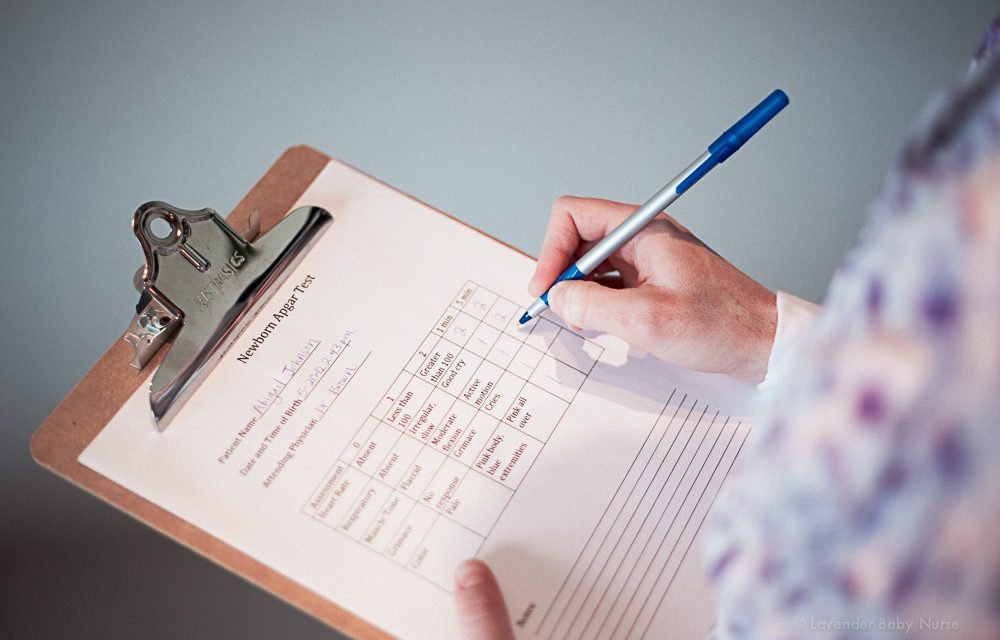What if my baby has a low Apgar score?
What is Hydrocephalus in Babies? If your baby has an Apgar score lower than 5, an oxygen mask may be put over his face to pump oxygen into the lungs to see if breathing improves and may even place a tube in the windpipe to improve the heartbeat.
If despite this, her Apgar scores remain low after these treatments, your baby will be transferred to a nursery so that she can receive more intensive special care. Therefore, the importance of the Apgar test is high, since thanks to this test, the baby can be diagnosed with particular physical conditions more quickly.
Above all, you should pay attention to everything that the doctors or gynecologists who attend your delivery. Well, they are the specialists who will advise you on what is best for you and your baby at all times. In addition, many tests are carried out during the trimesters of pregnancy to find out any disease, such as the O’Sullivan test, the non-invasive prenatal test, the Screening test, ultrasound scans in pregnancy …
Therefore, you should not worry and go to the different tests you will have to overcome throughout the pregnancy and carry out the medical follow-up of the baby once she is born.
How is it valued?
The Apgar score is performed in the delivery room at one minute after birth and at five minutes. Ratings above seven points indicate that the newborn is adjusting favorably to life outside the womb.
Suppose it is less than seven, at five minutes. In that case, the guidelines of the neonatal resuscitation program (NRP) indicate that the test should be retested every five minutes, until 20, according to the American Academy of Pediatrics (AAP) and the American Heart Association (AHA).
If all goes well, the newborn will obtain, for each of these aspects, the highest score, which will be two points, and, added together, they will give a total of 10, which are rare since most children obtain nine. When a baby has a low score and then a high score, it is known as recovered Apgar.
Scores of four, five, and six are intermediate and do not constitute markers of increased risk of neurological dysfunction, but rather these markers may be a consequence of physiological immaturity, maternal medications, the presence of congenital malformations, or other factors, depending on the AAP.
An Apgar score of zero to three at five minutes may correlate with neonatal mortality but alone does not predict subsequent neurological dysfunction.
Although the Apgar is not a test to diagnose diseases, it is likely that at some point, a specialist will ask you about its result. For doctors, it is crucial to know this score because “it provides us with information on whether the child was born in good condition, or if it required any maneuver after birth,” explains neuro pediatrician Clara Elena Soto Zurita.
What do I do if my child scored low on the APGAR test?
Any. The APGAR score is nothing but a wake-up call for physicians to take appropriate action in the first few minutes after delivery if necessary. A slightly low result on the APGAR test – especially the one performed at minute 1 – is quite common, especially in babies born after a high-risk pregnancy, by cesarean section, or after complicated labor. Lower APGAR scores are often seen in premature babies, who generally have less muscle tone than full-term babies and, in many cases, require additional monitoring and respiratory support due to lack of lung maturity.
Put away your flash memory cards and don’t wait too long, but don’t expect it to be too soon either; rarely does any baby get a perfect score on this test. Although it is generally a baby’s first evaluation, it is not a predictor of her behavior or future intellect.
The APGAR was developed in 1952 by obstetric anesthesiologist Virginia Apgar and has become a standard tool in evaluating newborns.
What is the Apgar test?
The APGAR is a rapid, general assessment of newborn well-being.
Advertisement – Continue Reading Below
When is the Apgar Test Used?
The APGAR is used immediately after the delivery of a baby. Test results are recorded one minute and five minutes from the time of birth.
Why is the APGAR Test Needed?
The one-minute APGAR assessment provides information about the baby’s physical health and helps the physician determine whether immediate or future medical treatment is required.
What Do APGAR Scores Mean?
APRs range from zero to two for each state, with a maximum final total score often. On the Minute Apgar score, scores between seven and ten indicate that the baby will need only routine postpartum care. Scores between four and six indicate that a bit of help with breathing may be necessary. Scores under the age of four can request temporary rescue measures.
At APGAR, five minutes, a score of seven to ten is standard. If the score is less than seven, the baby will continue to be monitored and repeat the test every five minutes for up to twenty minutes. Lower average scores do not mean that there will not be permanent health problems with the child.
Heart rate:
0 – no pulse
1 – Less than 100 beats per minute indicates that the baby is not very sensitive.
2 – More than 100 beats per minute indicates that the baby is vigorous.
The breathing:
0 – Do not breathe
1 – Weak cry – may sound like whimpering or grunting
2 – Scream Good, Loud
Muscle tone:
0- Flaccid
1 – Some push-ups (bending) in arms and legs
2 – Active movement
Reflex Response:
0 – No response to airways being stimulated
1 – Grimaces during stimulation
2 – Grimace or cough or sneeze during stimulation
Colour:
0 – Baby’s whole body is blue or pale
1 – Good body color, but hands or feet are blue
2 – Completely pink or of good color





